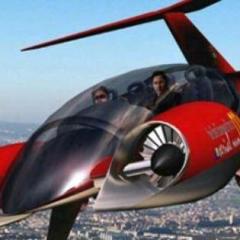Adding Kogan Reversing Camera to Aurion Prodigy
-
Latest Postings
-
0
Po299
Low boost it happens highway 112kmph po299 low boost limp mode gear won't pass 4th even on sports mode when I reset complete normal my engine was rebuilt done 20000km new turbo injector check and good working order I use penrite egr and cat cleaner there was a improvement I didn't get a chance to do over 100 kmph is it fuel air ratio related or valve o2 cat egr map sensor or map filter related? Any thoughts ? -
0
Boot Dimensions?
Hi All, Greetings from the UK. I wondered if any kind folk could help me out. I am trying to get hold of some measurements for the boot/trunk of later model Fortuners. Does any know the height, min width (between the stowed 3rd seats) and the min depth from the 2nd row seat backs to the tailgate? Trying to work out if I can get all my luggage on board before I travel. Hope someone can help. Cheers KP -
1
2007 - Floor mat
Original mats but in sandstone colour but you could possibly get them dyed a different colour. https://www.nunawadingtoyotaparts.com.au/toyota-camry-sandstone-carpet-mats-set-from-2006-t -
0
2007 - floor mats
Hi. I am just reposting this here from the Camry section just in case the broader community might be able to help. I have a 2007 Grande which is still in good nick, except for the drivers floor mat. Normally it wouldn't be a problem to replace the floor mat but because it has the word CAMRY embroidered into the floor mat, I would like to replace it with the same again. I'm feeling reasonably confident that a Toyota dealership would just laugh at a request for another factory one so my question is, is it even still possible to locate an embroidered floor mat for my 17 year old car? If so, where? Or is there a business that will replicate the original? -
6
Front parking sensors
We have a 2021 VX Prado with Toyota bullbar that is the doing same thing, the dealer did a patch under warranty which made no difference. The dealer now says they fixed it under warranty (by doing the patch) and there is nothing else they can do so if we want them to keep looking at it we will be paying for it. That is not our understanding of how warranty works and will be taking this matter further. -
0
Cruise Control Not Engaging
Hi. My 2008 Rav 4 cruise control has not worked since I’ve owned it. When the on button on the stalk is pressed nothing happens, not green cruise dash light or anything. Previously, I’ve had a problem when the ABS, VSC and parking brake light all turned on but that was fixed by a brake light switch replacement. But the cruise still does not work. I’ve checked all the fuses and all are good. Is this a common issue and does anyone know why it’s happening. thanks -
0
Head Unit with Apple CarPlay
Hello everyone, I'm sure there would have to be someone with the same topic but I'm looking for a good head unit for my wife's 2014 RAV4 with Apple CarPlay that wirelessly connects to the phone and has set up so she can connect steering wheel controls and still use her reverse camera, any suggestions please? Thank you so much everybody! -
4
Toyota Corolla 2012 zre152 4 speed automatransmission issue
No all good herb I know your trying to help, I should have been more clear, I have updated my wording. Thanks alot -
1
2007 - Floor mat
Hi. I have a nice 2007 Grande which is still in good nick, except for the drivers floor mat. Normally it wouldn't be a problem to replace the floor mat but because it has the word CAMRY embroidered into the floor mat, I would like to replace it with the same again. I'm feeling reasonably confident that a Toyota dealership would just laugh at a request for another factory one so my question is, is it even still possible to locate an embroidered floor mat for my 17 year old car? If so, where? Or is there a business that will replicate the original? -
4
Toyota Corolla 2012 zre152 4 speed automatransmission issue
OHH! I missed that. Herb
-




Recommended Posts
Join the conversation
You can post now and register later. If you have an account, sign in now to post with your account.